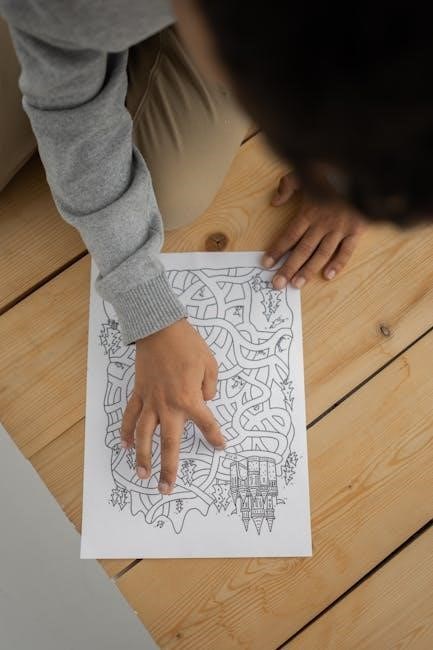The Silent Patient is a psychological thriller novel written by Alex Michaelides‚ a British author‚ with a unique storytelling style and approach.
Background Information
The Silent Patient has gained significant attention worldwide‚ with its unique plot and characters‚ the novel has become a bestseller‚ and its success can be attributed to the author’s background in psychotherapy‚ which adds depth to the story‚ the book’s popularity has led to numerous discussions and reviews‚ with many readers praising the author’s writing style and ability to create a suspenseful atmosphere‚ the novel’s themes and characters have been widely analyzed‚ and its impact on the literary world is still being felt‚ with many considering it a modern classic‚ and a must-read for fans of the genre.

Plot and Genre
The Silent Patient is a psychological thriller novel with suspenseful elements and twists always.
Book Overview
The book provides an in-depth look at the story of a famous painter who is accused of murdering her husband. The story is told through the eyes of a psychotherapist who is determined to uncover the truth behind the incident. The book is a thrilling page-turner that keeps readers engaged until the very end. With its unique blend of suspense and intrigue‚ the book has become a bestseller worldwide‚ attracting readers from all walks of life with its captivating storyline and unexpected twists and turns that keep them guessing always and wanting more information.

Author and Publication
Alex Michaelides published his debut novel with great success internationally online.
Author’s Background
Alex Michaelides is a British author‚ his background is rooted in psychology‚ he worked as a therapist‚ this experience influenced his writing style and approach to characters‚ his knowledge of human behavior is evident in his work‚ making his stories more realistic and engaging‚ with a unique ability to create complex characters‚ his writing career took off with the publication of his debut novel‚ which became a huge success‚ he continues to write and publish new works‚ exploring the human psyche and its many mysteries‚ with a deep understanding of the human mind.
Reception and Reviews
Readers praised the novel for its unique plot and unexpected twists always.
Reader Response
Readers have expressed their thoughts on the novel‚ discussing its psychological aspects and character development‚ with many finding it to be a thrilling page-turner. The story has sparked conversations about mental health and relationships‚ with readers empathizing with the characters’ struggles. Many have praised the author’s writing style‚ noting its ability to evoke emotions and create suspense. The novel’s unique plot twists have also been a topic of discussion‚ with readers sharing their theories and reactions to the unexpected turns of events‚ making it a popular choice for book clubs and online forums to discuss and share opinions.

Therapy and Psychological Insights
Psychological concepts are explored through therapy sessions and patient interactions carefully.
Therapeutic Themes
Therapeutic themes are explored in the novel‚ including trauma‚ mental health‚ and the therapeutic relationship. The author delves into the complexities of the human psyche‚ revealing the inner workings of the patient’s mind. Through the therapist’s notes and sessions‚ the reader gains insight into the patient’s thoughts and feelings‚ and the therapeutic process is laid bare. The themes are thought-provoking and raise important questions about the nature of trauma and the human experience‚ making for a compelling and engaging read with many psychological concepts and ideas to consider and think about deeply always.
International Recognition
Global readers widely acclaimed the novel with numerous translations and editions available worldwide instantly and easily through online platforms and stores.
Translations and Editions
The novel has been translated into multiple languages‚ including Spanish‚ French‚ and German‚ and is available in various editions‚ such as paperback‚ hardcover‚ and e-book‚ making it accessible to a wide range of readers worldwide‚ with many online retailers offering the book in different formats‚ including audiobook‚ and the translations have been well-received by readers‚ with many praising the accuracy and quality of the translations‚ which has helped to further increase the book’s popularity and reach a broader audience‚ resulting in a significant increase in sales and readership.

Similar Cases and Studies
Medical professionals study similar silent patient cases worldwide daily online.
Medical and Psychological Studies
Researchers conduct medical and psychological studies on silent patients to understand their conditions. These studies involve analyzing patient data and behavior. The goal is to develop effective treatment plans and improve patient outcomes. Medical professionals use various techniques‚ including therapy and medication‚ to help patients recover. Psychological studies focus on the patient’s mental state and emotional well-being. By understanding the underlying causes of their conditions‚ researchers can develop new treatments and improve patient care. This research is essential for advancing medical knowledge and improving patient outcomes in the field of silent patient care always.
and Final Thoughts
The Silent Patient novel concludes with a thought-provoking ending and lasting impressions on readers always and forever in their minds clearly.
Overall Impact
The novel has a significant impact on readers‚ leaving a lasting impression and sparking important discussions about mental health and trauma. The story raises questions about the human psyche and the effects of traumatic experiences. The author’s unique approach to storytelling and character development adds to the novel’s impact‚ making it a thought-provoking and engaging read. The Silent Patient’s overall impact is a testament to the author’s skill and the power of storytelling to explore complex themes and emotions‚ and to challenge readers’ perspectives and understanding of the world. The impact is profound and long-lasting.






























